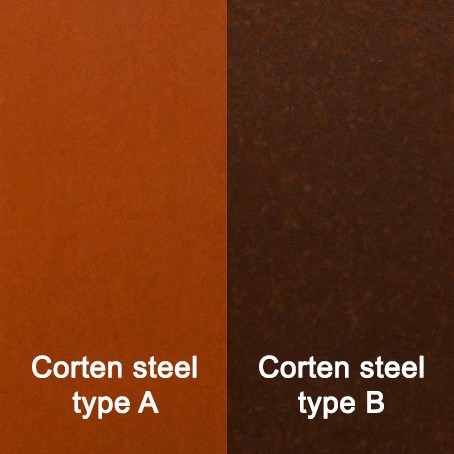
Corten steel is loved in gardens for its warm rust color and living texture. Within that family there are roughly two variants: Corten A and Corten B. For planters and garden edging, type A is often the more aesthetic choice—here’s why.
1) A richer, more even patina (the “rust layer” of the steel)
Corten A contains extra phosphorus. That element accelerates the formation of a finer, more uniform protective layer (patina). The result is less staining and a calm, warm rust tone that designers so appreciate—exactly what you want in an object you look at every day.
2) Made for visible sheet applications—so crisp edges
Corten A is usually supplied as sheet and is intended for visible applications in the garden and for cladding. For planters, this translates into clean, sharp folds and a neat finish on thin-walled containers. Corten B is more often used in load-bearing structures—functional, dark brown, and visually less refined.
3) Color depth that makes greenery pop
The patina of Corten type A typically develops warm red-brown tones that contrast beautifully with green foliage and purple hues in planting. As a result, Corten A planters often act as color enhancers in borders or on the terrace.
4) Less maintenance, ages beautifully
Thanks to its more stable patina, Corten A is less prone to uneven rust formation, so you rarely need to intervene to correct its appearance. The steel is designed to age beautifully without a coating—ideal for busy urban gardens and hospitality terraces.

5) Corten steel type B is more “work steel”
Technically, both variants are weather-resistant, but their positioning differs: Corten A is explicitly promoted in industry for decorative applications; Corten B for heavy, load-bearing work. For a planter—a purely visual object—that works in favor of type A.



















